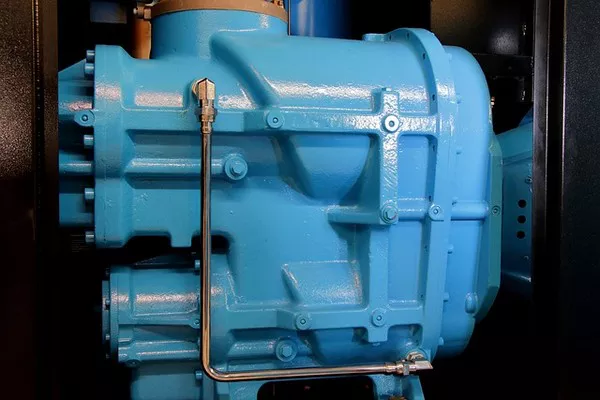In the world of construction and woodworking, efficiency and precision are paramount. Nail guns, also known as nailers, have revolutionized these industries by speeding up work processes and ensuring consistent results. However, to operate a nail gun effectively, you need a reliable air compressor that can deliver consistent air pressure. Choosing the right air compressor for your nail gun involves understanding your needs, the technical specifications of both the compressor and the nail gun, and various other factors that contribute to overall performance and efficiency.
Understanding Nail Guns and Air Compressors
Nail guns come in different types, including pneumatic (air-powered), electric, and gas-powered models. Among these, pneumatic nail guns are widely favored for their power, reliability, and ease of maintenance. These tools rely on compressed air delivered by an air compressor to drive nails into various materials. Therefore, the choice of air compressor significantly impacts the performance of the nail gun.
Key Factors to Consider
When selecting an air compressor for nail guns, several factors need careful consideration:
1. Air Pressure (PSI)
The air pressure required for nail guns typically ranges from 70 to 120 pounds per square inch (PSI), depending on the model and the size of nails being used. Most standard nail guns operate effectively at around 90 PSI. It’s crucial to choose an air compressor that can consistently deliver the required PSI without fluctuations, as inconsistent pressure can affect the quality and depth of nail penetration.
2. Air Volume (CFM)
Cubic Feet per Minute (CFM) is a measure of the volume of air delivered by the compressor. Different nail guns have varying CFM requirements, often ranging from 2 to 5 CFM. Larger nail guns or continuous-use scenarios may require higher CFM ratings. It’s essential to match the CFM output of the compressor with the CFM requirements of your nail gun to ensure uninterrupted operation.
3. Tank Size
The tank size determines how much compressed air the compressor can store before it needs to refill. For intermittent use with nail guns, a smaller tank size (e.g., 2 to 6 gallons) may suffice. Continuous use or use with larger nail guns may necessitate a larger tank (e.g., 10 gallons or more) to maintain adequate pressure and minimize downtime for refills.
4. Portability and Mobility
Consider where and how you intend to use the nail gun and compressor. Portable air compressors with wheels and ergonomic handles are ideal for jobsites where mobility is essential. Compact models are suitable for smaller workshops or DIY projects where space is limited.
5. Noise Level
The noise generated by air compressors can vary significantly. For indoor use or jobsites where noise regulations apply, choose a compressor with a lower decibel rating (dB). Oil-lubricated compressors tend to be quieter than oil-free models.
6. Power Source
Air compressors are typically powered by electricity or gas. Electric models are more common for indoor use due to their cleaner operation and lower noise levels. Gas-powered compressors are suitable for outdoor use or remote locations where electricity may not be readily available.
Types of Air Compressors
1. Pancake Compressors
Pancake compressors are compact, portable, and typically have smaller tank sizes. They are suitable for light to medium-duty use with nail guns, making them popular among DIYers and hobbyists.
2. Hot Dog Compressors
Hot dog compressors have a horizontal tank design that offers a good balance between portability and capacity. They are suitable for both DIY projects and professional use with nail guns.
3. Wheelbarrow Compressors
Wheelbarrow compressors feature a larger tank size and are mounted on wheels for easy mobility on rough terrain. They are ideal for contractors and construction sites where robust performance and mobility are crucial.
4. Stationary Vertical Compressors
Stationary vertical compressors have large tank capacities and are designed for heavy-duty applications and continuous use. They are suitable for professional workshops and industrial settings.
See Also WHERE ARE INGERSOLL RAND AIR COMPRESSORS MADE?
Selecting the Right Compressor for Your Nail Gun
Step 1: Determine Your Nail Gun’s Requirements
- Check the manufacturer’s specifications for PSI and CFM requirements.
- Consider the size and type of nails you will be using.
Step 2: Calculate Your Air Compressor Needs
- Choose a compressor with a slightly higher CFM rating than your nail gun’s requirement to ensure optimal performance.
- Ensure the compressor’s PSI rating matches or exceeds your nail gun’s requirements.
Step 3: Consider Your Working Environment
- Evaluate noise restrictions, space constraints, and the availability of power sources.
- Choose a compressor that meets these environmental considerations without compromising performance.
Step 4: Assess Portability and Storage
- Determine whether you need a portable compressor for jobsite mobility or a stationary model for a workshop setting.
- Consider the tank size and how it impacts the compressor’s portability and storage requirements.
Maintenance and Care
Proper maintenance is essential to ensure the longevity and efficiency of your air compressor and nail gun:
- Regularly check and change the compressor’s air filter.
- Drain moisture from the tank to prevent rust and corrosion.
- Monitor oil levels (for oil-lubricated compressors) and follow manufacturer guidelines for oil changes.
- Inspect hoses and fittings for leaks or damage.
Conclusion
Choosing the best air compressor for nail guns involves understanding the technical requirements of both tools and matching them to your specific needs and working conditions. Whether you’re a DIY enthusiast or a professional contractor, selecting the right compressor will enhance the performance and reliability of your nail gun, ultimately improving productivity and quality of work. By considering factors such as PSI, CFM, tank size, portability, and maintenance requirements, you can make an informed decision that maximizes efficiency and ensures consistent results in your woodworking or construction projects.

